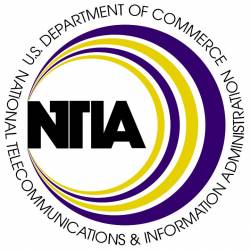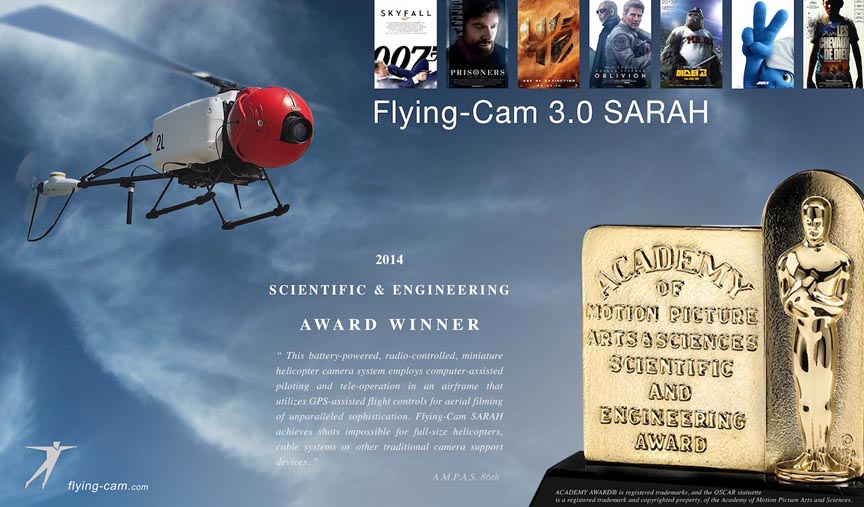
Apparently working overtime during the President’s Day weekend, the U.S. Department of Transportation’s Federal Aviation Administration (FAA) today (February 15, 2015) proposed a framework of regulations <http://www.faa.gov/regulations_policies/rulemaking/recently_published> that would allow routine use of certain small unmanned aircraft systems (UAS) while maintaining flexibility to accommodate future technological innovations. An overview of the small UAS rule can be viewed at
Apparently working overtime during the President’s Day weekend, the U.S. Department of Transportation’s Federal Aviation Administration (FAA) today (February 15, 2015) proposed a framework of regulations <http://www.faa.gov/regulations_policies/rulemaking/recently_published> that would allow routine use of certain small unmanned aircraft systems (UAS) while maintaining flexibility to accommodate future technological innovations. An overview of the small UAS rule can be viewed at
<http://www.faa.gov/regulations_policies/rulemaking/media/021515_sUAS_Summary.pdf>.
Simultaneously, the White House issued a presidential memorandum <http://www.whitehouse.gov/the-press-office/2015/02/15/presidential-memorandum-promoting-economic-competitiveness-while-safegua> to “promote economic competitiveness and innovation while safeguarding privacy, civil rights, and civil liberties in the domestic use of UAS.” The subject may have gained more visibility with the president when a drone crash-landed on the White House grounds last month.
The FAA proposal offers safety rules for small unmanned aerial vehicles (UAVs) (under 55 pounds) conducting non-recreational operations. (Note: UAS refers to the ground control, operations, and aircraft used in such systems, while UAV refers only to the aircraft.) The rule would limit flights to daylight and visual-line-of-sight operations. It also addresses height restrictions, operator certification, optional use of a visual observer, aircraft registration and marking, and operational limits. Members of the public will be able to comment on the proposed regulation for 60 days from the date of its forthcoming publication in the Federal Register.
The proposed rule also includes extensive discussion of the possibility of an additional, more flexible framework for “micro” UAV under 4.4 pounds. The FAA is seeking public comment on this possible classification to determine whether it should include a micro UAV option as part of a final rule. The FAA is also asking for comment about how the agency can further leverage the UAS test site program <https://www.insidegnss.com/node/3834> and an upcoming UAS Center of Excellence (CoE) <https://www.insidegnss.com/node/3978> to further spur innovation at “innovation zones.”
Initial response from industry was favorable, although some individual companies, including Amazon, expressed unhappiness with the proposals.
“This proposed rule is a critical milestone in the UAS integration process, and one that is long overdue. UAS technology has largely remained grounded while many prospective users wait for the regulatory framework to catch up," said Brian Wynne, president and CEO of the Association for Unmanned Vehicle Systems International (AUVSI).
"This is a good first step in an evolutionary process that brings us closer to realizing the many societal and economic benefits of UAS technology. We’re currently reviewing the details of the proposed rule, and we look forward to addressing its specific provisions once we’ve had time to fully digest the rule,” Wynne added.
Separate from this proposal, the FAA intends to hold public meetings to discuss innovation and opportunities at the UAS test sites and CoE. These meetings will also be announced in a future Federal Register notice.
View from the White House
“UAS technology continues to improve rapidly, and increasingly UAS are able to perform a variety of missions with greater operational flexibility and at a lower cost than comparable manned aircraft,” the presidential memo stated in its introduction. “A wide spectrum of domestic users — including industry, private citizens, and Federal, State, local, tribal, and territorial governments — are using or expect to use these systems, which may play a transformative role in fields as diverse as urban infrastructure management, farming, public safety, coastal security, military training, search and rescue, and disaster response.”
An accompanying fact sheet on the memo issued by President Obama, lays out its key points.
First, the memorandum requires Federal agencies to ensure that their policies and procedures are consistent with limitations set forth in the Presidential Memorandum on the collection and use, retention, and dissemination, of information collected through UAS in the NAS.
Second, the memorandum requires agencies to ensure that policies are in place to prohibit the collection, use, retention, or dissemination of data in any manner that would violate the First Amendment or in any manner that would discriminate against persons based upon their ethnicity, race, gender, national origin, religion, sexual orientation, or gender identity, in violation of law.
Third, the memorandum includes requirements to ensure effective oversight.
Fourth, the memorandum includes provisions to promote transparency, including a requirement that agencies publish information within one year describing how to access their publicly available policies and procedures implementing the Presidential Memorandum.
Fifth, recognizing that technologies evolve over time, the memorandum requires agencies to examine their UAS policies and procedures prior to the deployment of new UAS technology, and at least every three years, to ensure that protections and policies keep pace with developments.
“Technology is advancing at an unprecedented pace and this milestone allows federal regulations and the use of our national airspace to evolve to safely accommodate innovation,” said Transportation Secretary Anthony Foxx.
Not Out of Sight
The proposed FAA rule would require an operator to maintain visual line of sight of a small UAS, allowing but not requiring an operator to work with a visual observer to maintain constant visual contact. The operator would still need to be able to see the UAS with unaided vision (except for glasses).
That would complicate, if not preclude, the plans of business such as Amazon that wish to make large-scale, widespread delivery of items by unmanned aerial vehicles (UAVs). However, the FAA is asking for comments on whether the rules should permit operations beyond line of sight, and if so, what the appropriate limits should be.
Under the proposed rule, the person actually flying a small UAS would be an “operator,” who would have to be at least 17 years old, pass an aeronautical knowledge test, and obtain an FAA UAS operator certificate. To maintain certification, the operator would have to pass the FAA knowledge tests every 24 months. A small UAS operator would not need any further private pilot certifications (i.e., a private pilot license or medical rating).
The new rule also proposes operating limitations designed to minimize risks to other aircraft and people and property on the ground:
· A small UAS operator must always see and avoid manned aircraft. If there is a risk of collision, the UAS operator must be the first to maneuver away.
· The operator must discontinue the flight when continuing would pose a hazard to other aircraft, people or property.
· A small UAS operator must assess weather conditions, airspace restrictions and the location of people to lessen risks if he or she loses control of the UAS.
· A small UAS may not fly over people, except those directly involved with the flight.
· Flights should be limited to 500 feet altitude and no faster than 100 mph.
· Operators must stay out of airport flight paths and restricted airspace areas, and obey any FAA Temporary Flight Restrictions (TFRs).
The proposed rule maintains the existing prohibition against operating in a careless or reckless manner. It also would bar an operator from allowing any object to be dropped from the UAS.
Operators would be responsible for ensuring that an aircraft is safe before flying, but the FAA is not proposing that small UAS comply with current agency airworthiness standards or aircraft certification. For example, an operator would have to perform a preflight inspection that includes checking the communications link between the control station and the UAS. Small UAS with FAA-certificated components also could be subject to agency airworthiness directives.
The new rules would not apply to model aircraft. However, model aircraft operators must continue to satisfy all of the criteria specified in Sec. 336 of Public Law 112-95, including the stipulation that they be operated only for hobby or recreational purposes.





